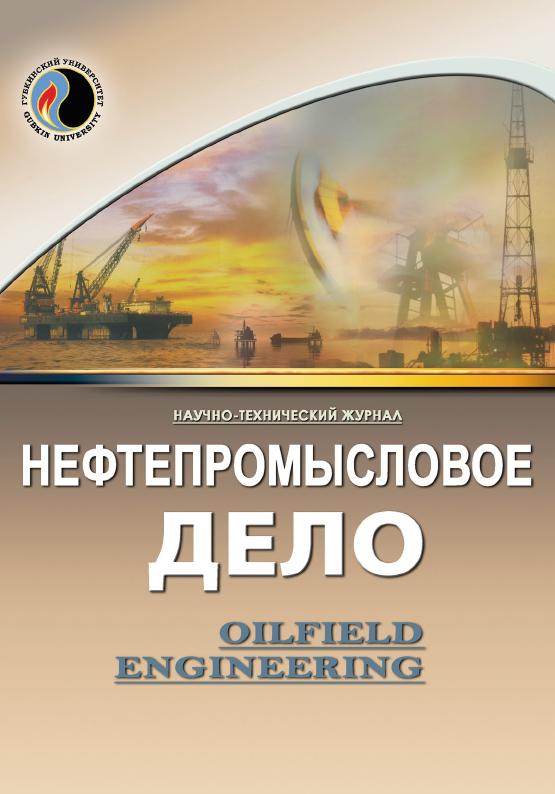Intensification of oil production through the use of hydraulic fracturing fluid based on polyacrylamide
UDC: 622.276.66
DOI: 10.33285/0207-2351-2023-9(657)-43-47
Authors:
KOLESNIK SVETLANA V. 1
1,
EFIMOV MARK E.1
1 Industrial University of Tyumen Branch in Nizhnevartovsk, Nizhnevartovsk, Russia
Keywords: hydraulic fracturing, synthetic gel-forming agent, viscosity, thermal stability, polyacrylamide base, guar base, sand-bearing capacity, chemical reagent, economic feasibility
Annotation:
The article considers the technology of hydraulic fracturing of a formation (HFF) based on polyacrylamide (PAA), the parameters by which the quality of the liquid is assessed on both guar-based and polyacrylamide-based are clarified. The main criterion responsible for the success of the hydraulic fracturing operation is the viscosity of the injected liquid and, as a consequence, its thermal stability, it is this fact that the injection time will depend on. The formulation of hydraulic fracturing fluid based on PAA differs from guar, consisting of two main chemical reagents - a gel-forming agent and a stapler, by using only a synthetic gel-forming agent. The recommended concentration is from 4 l/m3, it is at this point that the properties of the sand-bearing liquid begin to manifest themselves in the synthetic gel. An important advantage is also compliance with the requirements for hydraulic fracturing fluids, which makes it possible to improve not only the filtration properties of the reservoir, but also to take into account the economic feasibility of carrying out activities with such a chemical reagent. When using PAA-gel, it is possible to note a reduction in logistics costs, savings due to less heating of water for hydraulic fracturing, the exclusion of a hydration plant, a decrease in the number of the crew workers, a decrease in the wear of pumping units, including fuel consumption decrease when conducting the hydraulic fracturing operation.
Bibliography:
1. Dopolnenie k tekhnologicheskoy skheme razrabotki Vyngapurovskogo neftegazokondensatnogo mestorozhdeniya. – M. – Noyabr’sk: NAD OAO "Gazprom neft’" – GeoNATs, 2011.
2. Effektivnost’ provedeniya gidravlicheskogo razryva plasta na Vyngapurovskom mestorozhdenii. / A.V. Sarancha, V.V. Fedorov, D.A. Mitrofanov, O.P. Zotova // Fundamental’nye issledovaniya. – 2015. – № 2-12. – S. 2581–2584.
3. Savenok O.V., Povarova L.V., Danielyan G.G. Tekhnologicheskaya effektivnost’ geologo-tekhnicheskikh meropriyatiy, primenyaemykh na Vyngapurovskom mestorozhdenii // Bulatovskie chteniya: materialy II Mezhdunar. nauch.-prakt. konf. 31 marta 2018 g. – Krasnodar, 2018. – T. 2: Razrabotka neftyanykh i gazovykh mestorozhdeniy, ch. 2. – S. 152–156.
4. Zhdanov S.A. Opyt primeneniya metodov uvelicheniya nefteotdachi plastov v Rossii // Neft. khoz-vo. – 2008. – № 1-12. – S. 58–61.
5. Gubarev M.I. Issledovanie svoystv zhidkostey gidrorazryva na osnove guarovoy kamedi // Problemy geologii i osvoeniya nedr: tr. XXIII Mezhdunar. simpoziuma im. akad. M.A. Usova studentov i molodykh uchenykh, posvyashch. 120-letiyu so dnya rozhd. akad. K.I. Satpaeva, 120-letiyu so dnya rozhd. prof. K.V. Radugina, Tomsk, 8–12 aprelya 2019 g. – V 2-kh t. – Tomsk: Izd-vo TPU, 2019. – T. 2. – S. 438–440.

